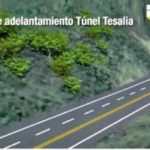Celsia Full-Year 2017 Profits Rise 47% Despite Lower Power Prices

Medellin-based Celsia – the electric-power division of corporate giant Grupo Argos – on January 26 reported full-year 2017 net profits of COP$251 billion (US$89 million), up 47% from COP$171 billion (US$61 million) in 2016.
Earnings before interest, taxes, depreciation and amortization (EBITDA) hit COP$1.12 trillion (US$399 million) for full-year 2017, up 9% year-on-year — an all-time record.
As for fourth-quarter (4Q) 2017, net profits dipped slightly, to COP$71 billion (US$25 million), down from COP$75 billion (US$27 million) in 4Q 2016. However, 4Q 2017 EBITDA rose 21% year-on-year.
Consolidated earnings for full-year 2017 dipped 18% year-on-year, to COP$3.1 trillion (US$1.1 billion) because of a decline in thermal-power generation and lower power prices in Colombia, the company explained. However, 4Q 2017 consolidated earnings rose 4% year-on-year.
Total power generation in Colombia for full-year 2017 totalled 5,226 gigawatt-hours (GWh), down from 5,596 GWh in 2016. However, 4Q 2017 generation rose 31% year-on-year thanks to heavier rainfall that enabled greater output at Celsia’s hydroelectric plants.
Celsia’s power operations in Central America generated 9% more income in 2017 versus 2016, hitting US$245 million.
Celsia president Ricardo Sierra added that the company is “very content” with its 2017 financial results, adding that Celsia is now a leader in development of solar-photovoltaic power arrays as well as photovoltaic roofs for commercial operators — including the Compañia Nacional de Chocolates chocolate factory in Rionegro, just outside Medellin.
Meanwhile, Celsia hailed a recent decision by Colombia’s national power regulator (CREG) that has boosted the financial outlook for thermal power generation — via a “marginal scarcity price” scheme that allows thermal power generators to tap special revenues mainly generated by hydropower operators. These special revenues enable thermal power generators to survive for months or years until called-upon to boost output during occasional droughts that sap Colombia’s overwhelmingly hydropower-dependent electrical grid.
The company also hailed the recent start-up of a natural gas regasification plant in Cartagena, enabling thermal power generators to tap liquefied natural gas (LNG) imports during periods of peak demand for gas in Colombia.
















